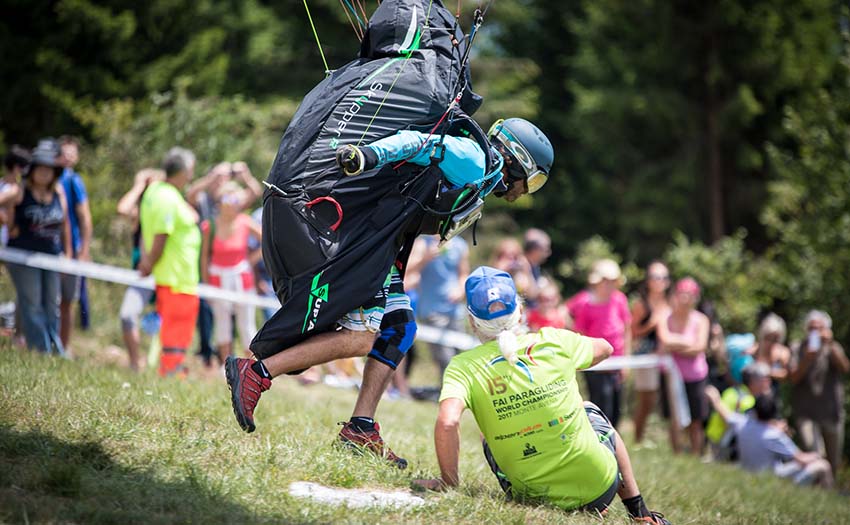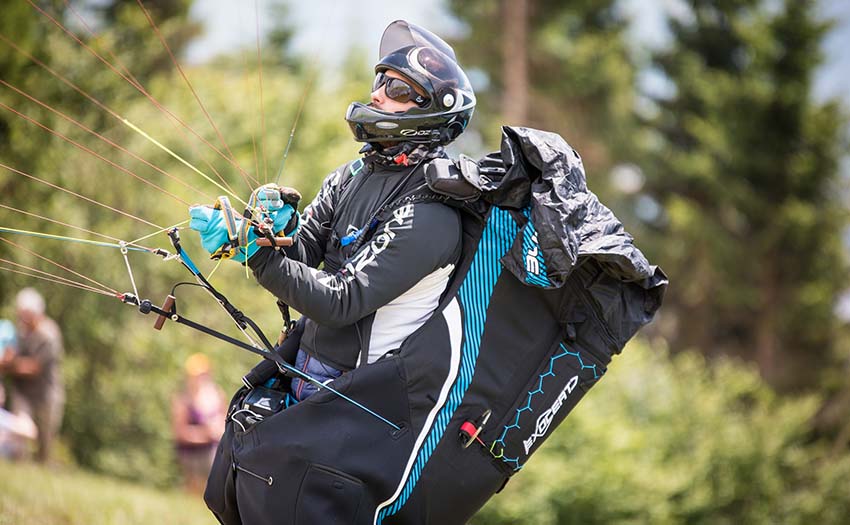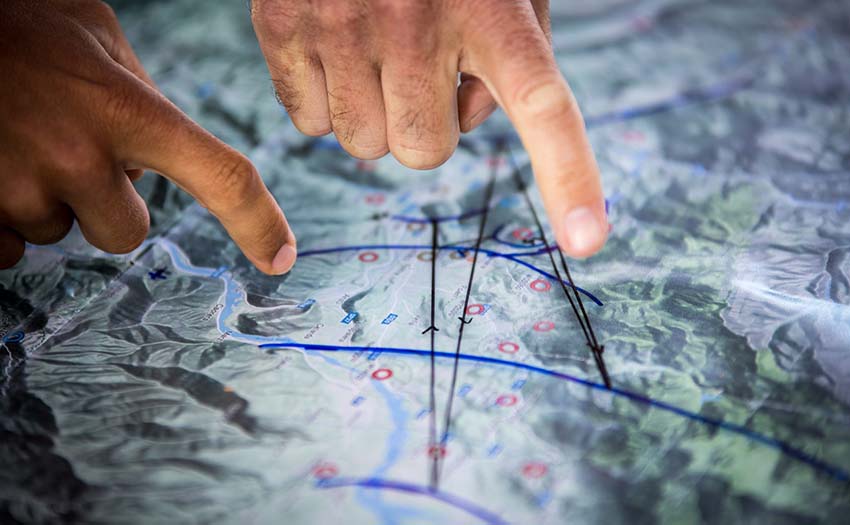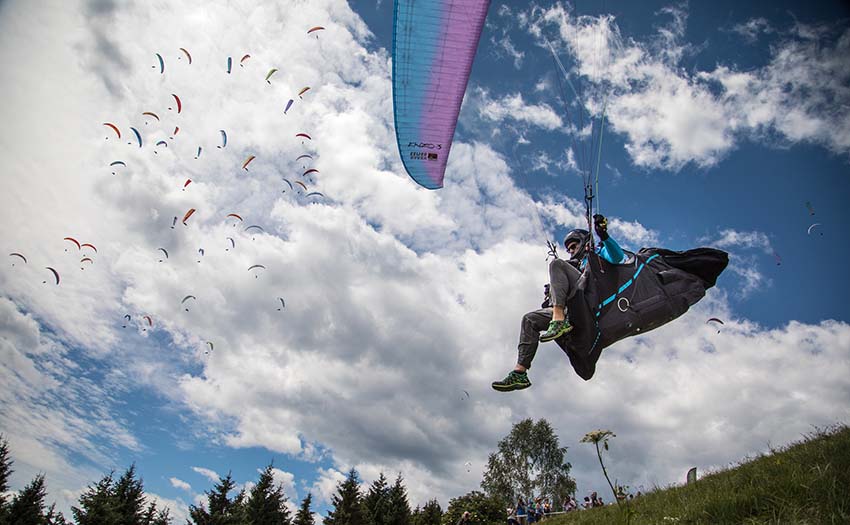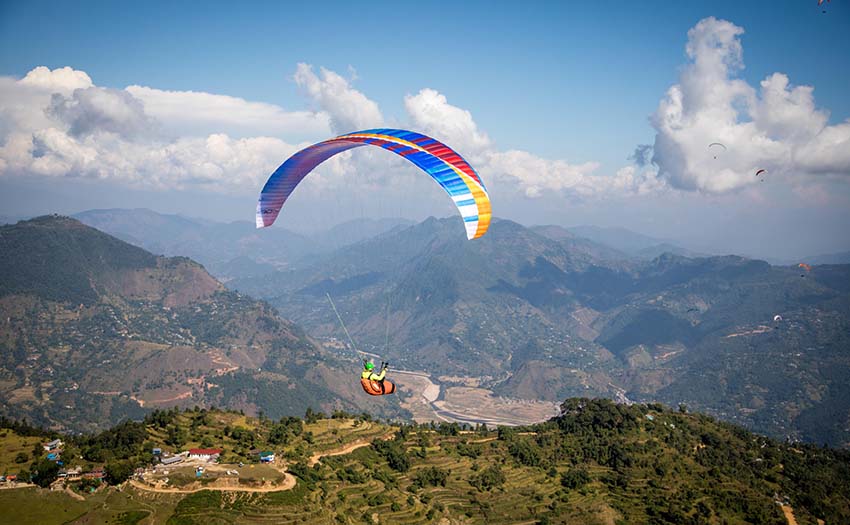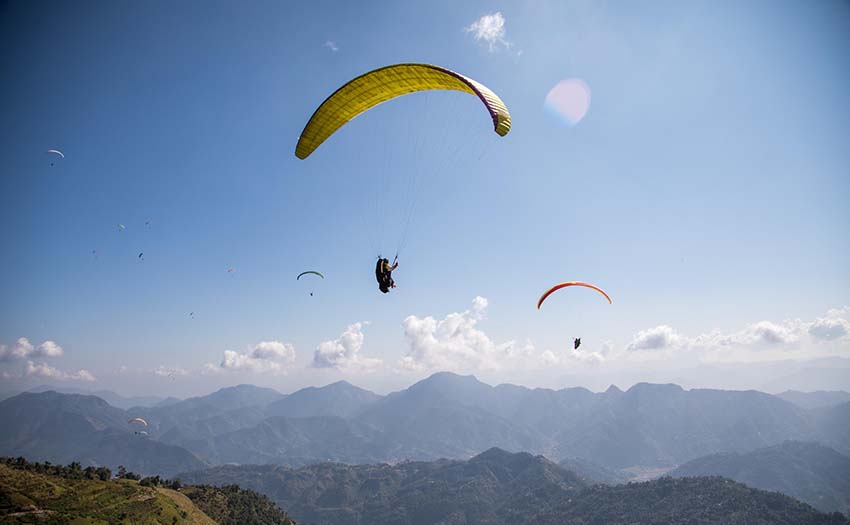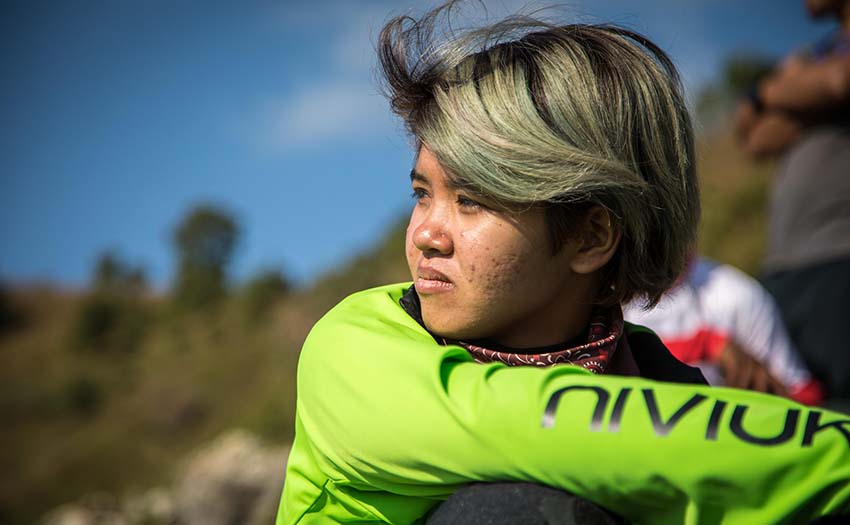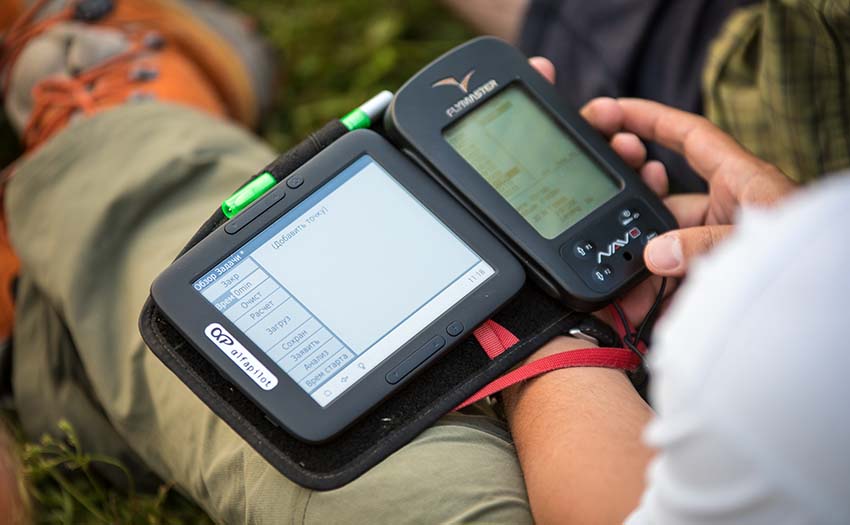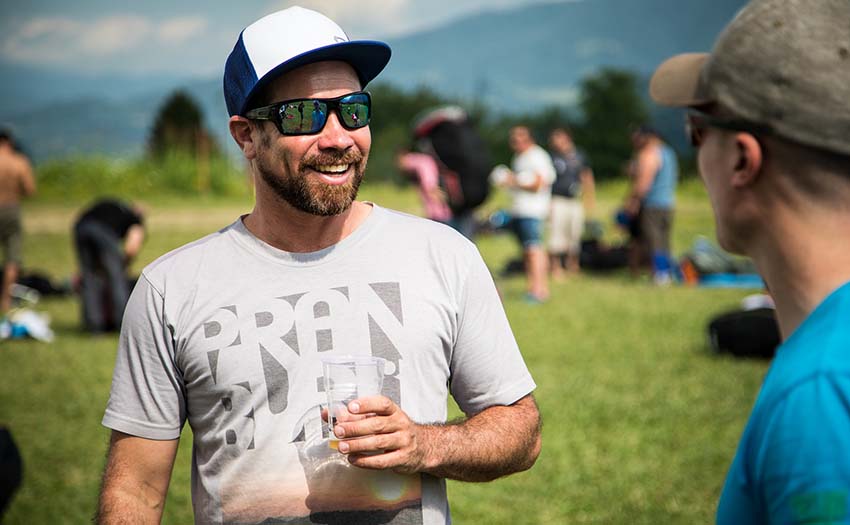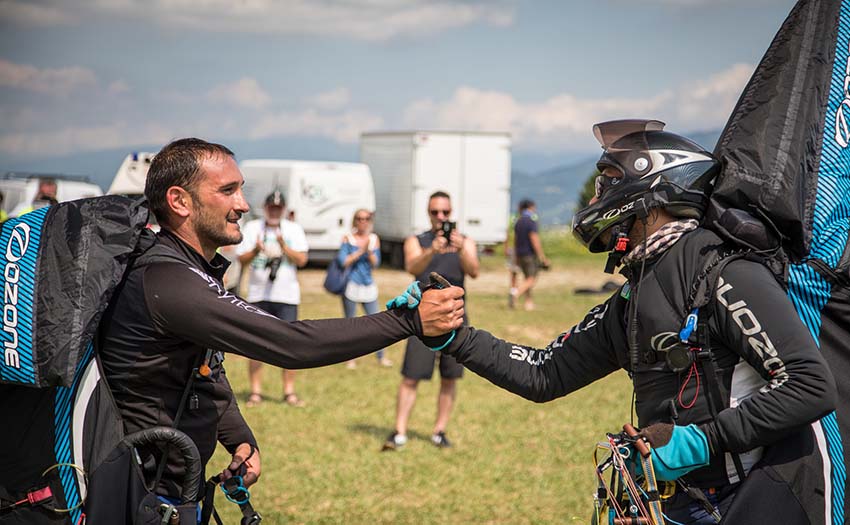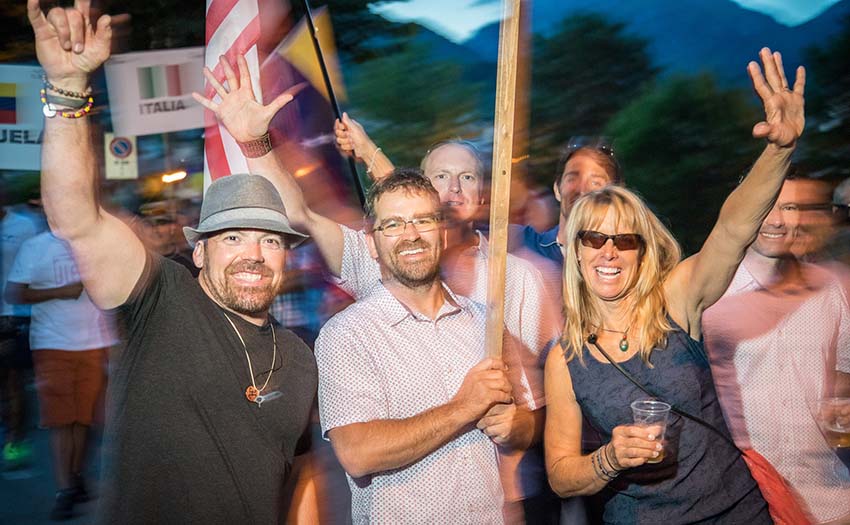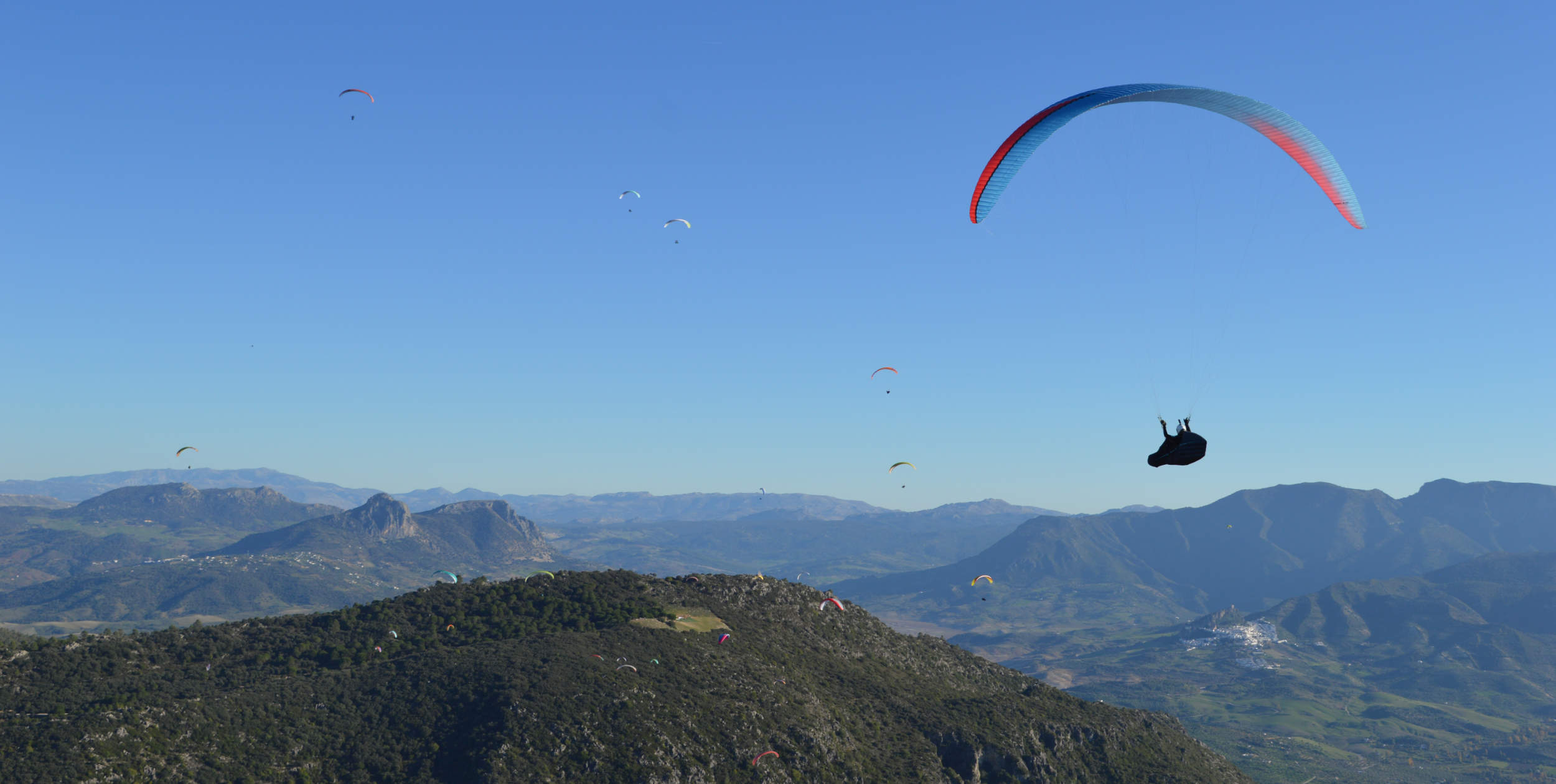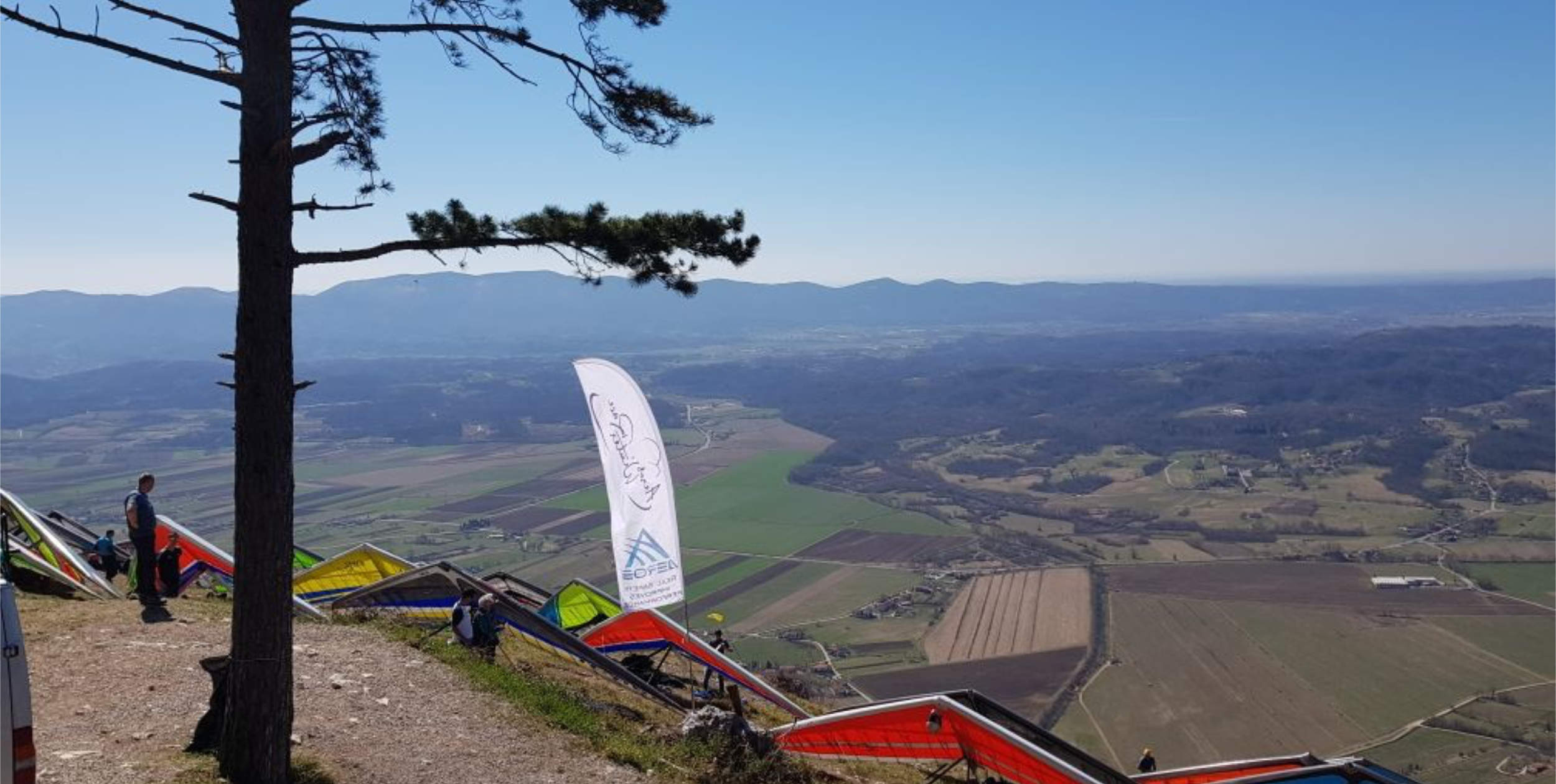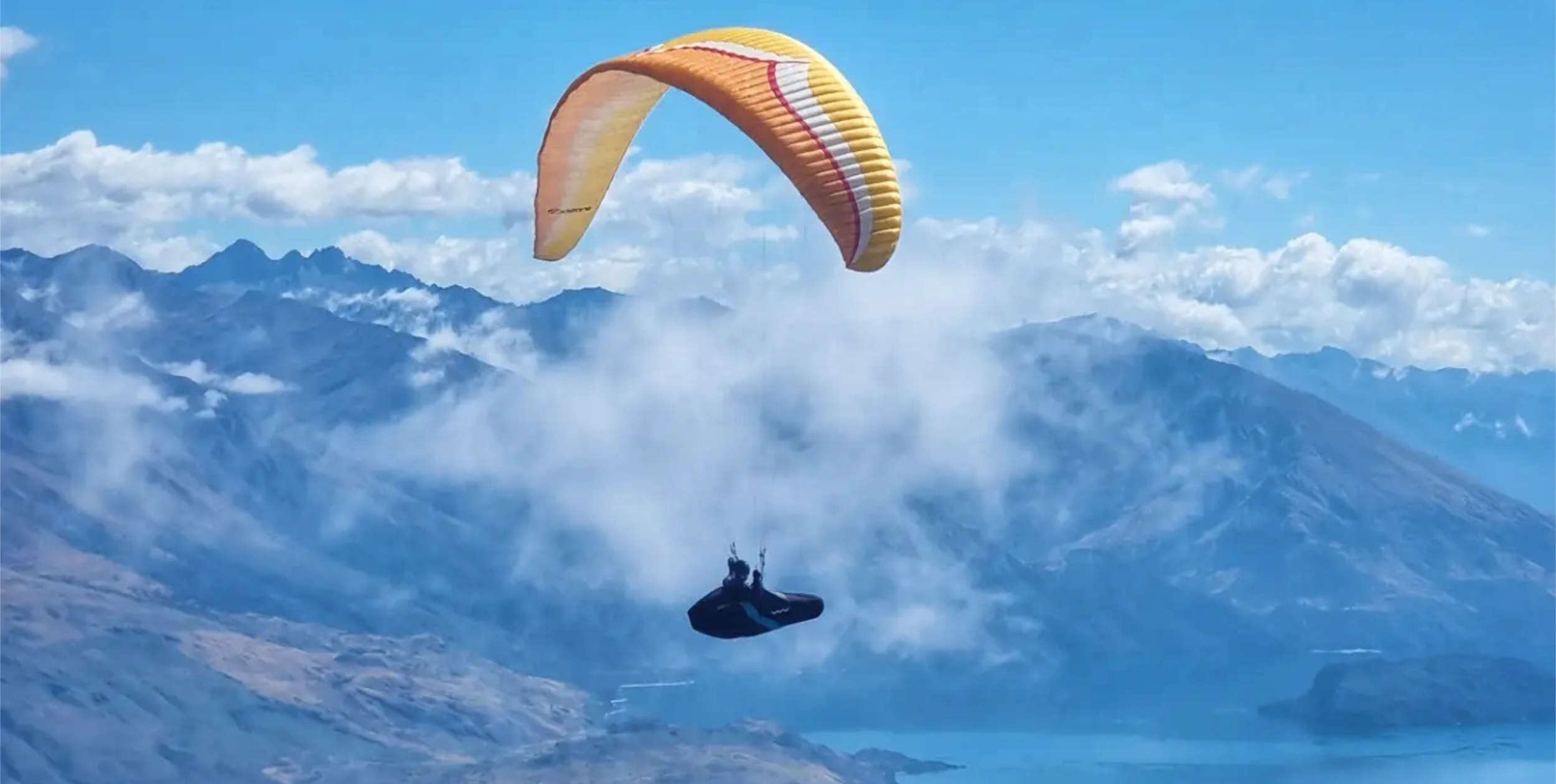Brett Hazlett at the Paragliding World Championships in 2017. Credit: Brett Hazlett
The rules, gliders and locations might change, but Greg Hamerton’s advice on how to compete remains timeless.
“THE WINDOW IS OPEN!” hails a marshal from down below, and suddenly the slope explodes into action around you. Your mind fills with a chaos of coloured fabric as the pilots leap into the air.
A glider rushes by, and you duck to avoid the pilot’s legs. Then it is your time to go, you have to launch and join the melee of spiralling gliders out in front of takeoff, mad swirls of the frantic and the masters, mixed in a fluid dance of adrenaline and determination.
A paragliding competition can be a wonderful game, an exhilarating challenge of skill pitted against the sky. But if you are not prepared it can also be an intimidating and high stress situation. Maybe this article will help bridge your gap between overload and understanding.
1. PREPARE FOR BATTLE
Use the time before the competition to methodically prepare your equipment: Reserve parachute repack, fresh and spare batteries for everything that can go flat, repair kit for your glider.
Research the site and chat to the local pilots, ask about competition tasks flown there in the past, war-stories and where things went wrong, what weather to expect. Look at websites from competitions held there before, and look at the tasks and tracklogs. Check out the XC routes on XC Planner.
Practice days are invaluable if you can afford the time! Getting there early allows you to calm your nervousness of an unfamiliar site. You can scout out routes, work out retrieves, learn the lay of the land, source the best flying maps, and absorb information, preventing overload during the comp.
Practice your ground-handling – it will come under pressure (100 pilots watching, cameras, spectators, side-on winds, thermals, unfamiliar sites). And get some airtime: whether you are at the competition site or still at home, take your glider out, make some time and get airborne! Keep current.
2. ON THE SLOPE
Understand the briefing: get a more experienced pilot to help you out. Things look completely different from the air, so ask, ask and ask again – you can’t have too much information about where the turnpoints are. Buddy-up with friends and fellow pilots.
Like what you’re reading? You will find plenty more like this inside Cross Country magazine. Here’s what some of our readers say:
“Honza Rejmanek’s new met article helped me enjoy a magical flight yesterday. Thank you for a wonderful publication” – Dan Corley, USA
“I love your magazine more than anything.” – Urs Haari, Switzerland
“Cross Country has a massive impact on pilots’ awareness, worldwide. Great job in inspiring and sharing knowledge!'” – Ben Kellett, New Zealand
Identify the top pilots. Take note of their glider colours and harness design, and memorise a few. Observing them will teach you an immense amount. Don’t copy and follow them, just watch and compare what they did to what you did, how they performed each day.
Form a battle strategy: every task consists of a few critical points connected by stretches of easier flying. At the end of the day, you will find pilots clustered around various points along the course, having fallen prey to those common technical critical points.
Sometimes they sneak up on you, sometimes they are obvious and can be planned for – a big valley crossing early in the day, a long glide away from the mountains against a headwind, a predicted weather-change. Decide how you will tackle each issue, get some advice, but most of all, mentally prepare yourself for these crux areas.
3. CHARGE!
Expect some degree of confusion at take-off, as competition takeoffs the world over are busy. The trick is to be ready before the pilot’s briefing. Then immediately after the briefing, get clipped in. You can always move, you can always wait, but if your glider’s in its bag, you’re going to be too late!
Once in the air, thermalling fast means following the core of the thermal. In a big gaggle of pilots traffic problems can be avoided instantly by following the pilot in front of you. Efficient flying is essential to hold on to every scrap of lift. Finally, you will see the top pilots jostling for position. As soon as a good pilot gets in a position where the lead the circling gaggle they can escape the turbulent wash of the other gliders, and will most likely sneak away.
4. RACING vs RUSHING
To fly fast does not mean full-speed ahead. Speed is a product of superior tactics, good thermalling and good lines. Use strong thermals to climb very high, then use long glides, bypassing the weaker thermals on the way.
Long ridges with abundant thermals can be flown fast by staying low, encountering more thermals. As you thermal upwards, think what your next move will be, stay one step ahead. This allows you to choose the fastest tactical route from the options available.
5. YOU ARE ALONE
Although there are other pilots in the sky, no one will experience exactly the same lift and sink as you will. So don’t worry about the pilot that seems to be gliding better than you, or the leaders up at cloudbase.
Maximise your individual performance, within the air that you alone are offered. Other gliders are information, use them as visible thermals. Make your own tactical decisions. Even if they are wrong. This way you will learn and remember the correct decision next time. Following the gaggle blindly is mindless.
6. YOUR SHIELD AGAINST DANGER!
In a competition, every metre counts. Keep going until both feet are on the ground, and expect a miracle – low saves are commonplace in competitions. Never, ever give up. But, an injury caused by flying beyond your safety margin is a waste of good skin and bone.
So have heart, believe you can do it, you can achieve incredible feats of distance flying, but keep your shield of safety by your side, don’t push yourself into situations you dread. There will always be some nutter out there who is prepared to take maniacal risks. Just break through your personal limitations, extend your flying beyond what you have ever achieved.
7. INSTRUMENTS
Before you head to the competition make sure you know your instrument well. You should be totally happy with entering a task from a list of waypoints and the information needed for any speed section. You don’t want to be trying to work it out when you are under stress. Set a small task from your local site and navigate it.
When you enter a task double-check it and compare the total distance and optimised distance with other pilots or the task board to make sure you have all the waypoints, then check the timings.
When you are in the air, unless you are competing with the leaders there is no need to shave the waypoints. Count a second or so after your instrument pings to say you are in a sector before turning to allow for a safety margin. When you get back to base, download your tracklog before you head to the bar, you want to make sure you get a score plus it will let the organisers know you are safely back.
8. THE AFTER-PARTY
Have a goal beer, go to the pub in evening, buy yourself a drink and relax! This is where you will learn a lot – the stories of the other competitors.
Quiz the task winners, debrief yourself, chat to your mates and absorb the tactics that worked, those that failed. Everyone wants to tell you his or her story, it’s as easy as saying “So, how was your flight today?”
9. PSYCHOLOGICAL STRENGTH
This is the deciding factor in many flights. The winners are those pilots that can regularly pick themselves up after a bad day. Remember that each pilot experiences his or her own individual weather, slightly different from everyone else, so use that fact to your advantage after a bad day.
You tried your best. It didn’t work. Today you will have completely different circumstances. Just fly your best, always give of your best, and that way you will never have cause to feel depressed about a day when the lift just wasn’t there for you.
10. HAVE FUN!
You are on holiday, after all. It is only a competition, one of hundreds held every year.
This is an edited version of an article first published in Cross Country Magazine 101. Photographs from the 2017 FAI Paragliding World Championships in Italy and the 2017 Nepal Paragliding Open, by Marcus King


